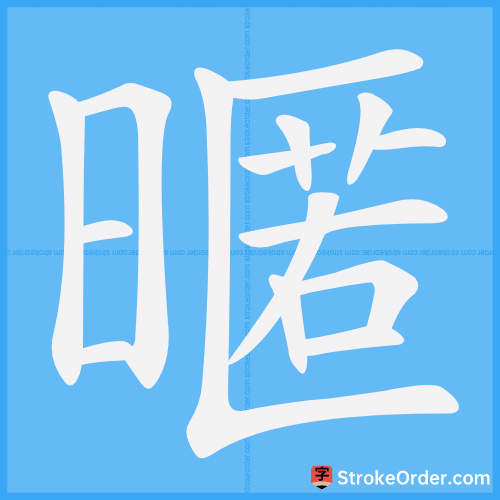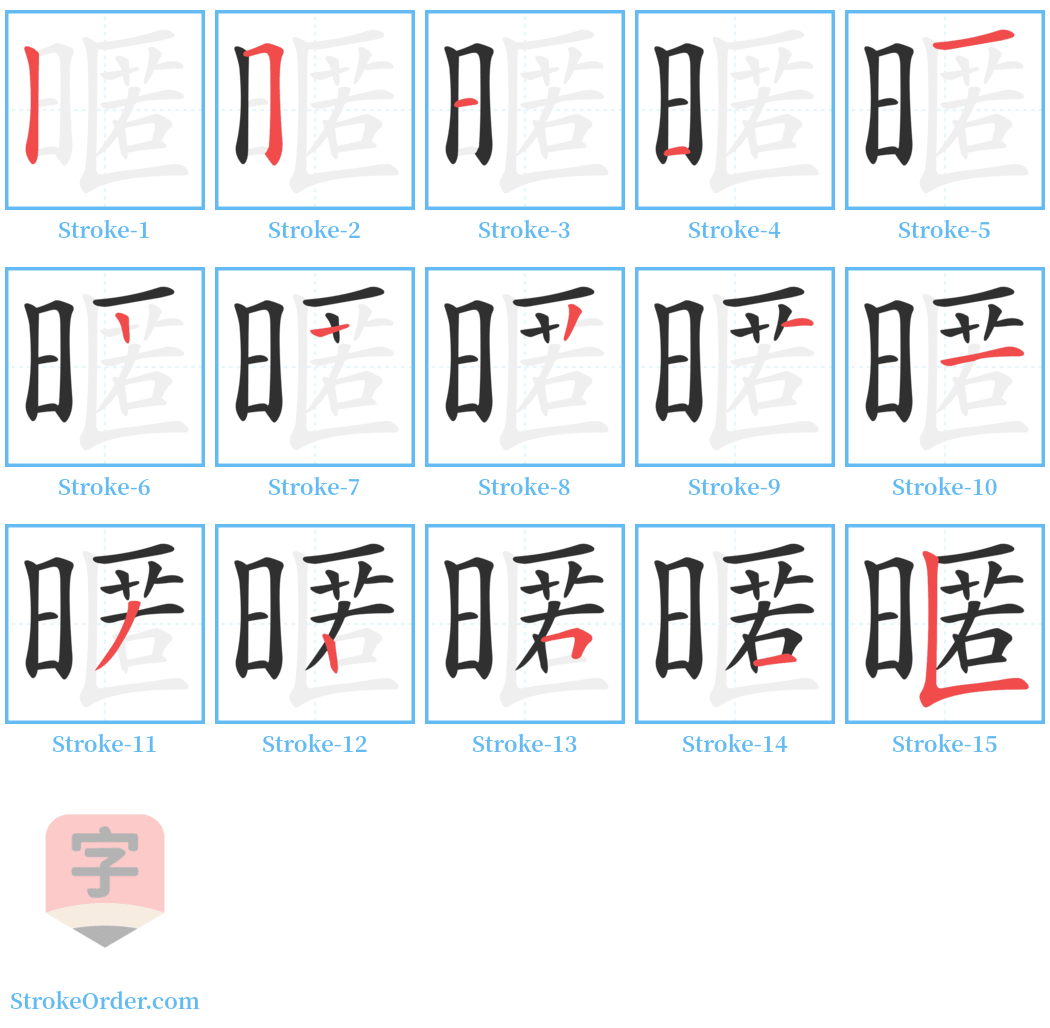暱 Stroke Order
Animated Stroke Order of 暱

Stroke Order Diagrams for 暱

Step-by-Step Handwriting Guide for 暱

Learn to Write Chinese Characters with Video Tutorials
Watch the video of writing the Chinese character "暱", learn the correct stroke order (笔顺) of the character "暱", and master the standard way of writing the character "暱".
Free Printable Handwriting Practice with Stroke Order: 暱
Printable Writing Practice Worksheet of "暱" in Portrait Orientation (Tian Zi Ge)

Printable Writing Practice Worksheet of "暱" in Landscape Orientation (Tian Zi Ge)

Information of 暱
Pinyin
nì
Radical
日
Strokes
14 strokes
Usage
★★★
Definition
familiar / to approach
暱 (nì)
1. 親近。
Close or intimate.
Example: 《爾雅•釋詁下》:“暱,近也。”
Translation: "Nì means close."
2. 私。
Private.
Example: 《列子•湯問》:“魏黑卵以暱嫌殺丘邴章。”
Translation: "Wei Heilan was privately resentful and killed Qiu Bingzhang."
3. 病。
Illness.
Example: 《廣雅•釋詁一》:“暱,病也。”
Translation: "Nì means illness."
Overview:
暱 is an adjective with its original meaning relating to intimacy or closeness. The character is constructed phonetically, combining "日" (sun) and a phonetic element, and can also be represented as "昵."
Further Reading:
1. 《說文》:暱,日近也。
Translation: "Nì, the sun is near."
2. 《爾雅》:暱,近也。 孫注:“親之近也。”
Translation: "Nì means close; as noted by Sun, it indicates intimacy."
3. 《詩·小雅·菀柳》:無自暱焉。
Translation: "Do not be too familiar."
4. 《左傳•襄公二年》:若背之,是棄力與言,其誰暱我?
Translation: "If you turn your back on me, who will be intimate with me?"
Meaning Variations:
1. 私
Translation: Private (as noted with the context of: 興)
2. 病
Translation: Illness (related to being seriously ill)
Example: 《詩•小雅•菀柳》:上帝甚蹈,無自暱焉。
Translation: "The supreme deity dances, do not become too familiar."